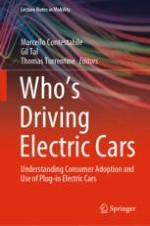This book offers a comprehensive yet accessible snapshot of the latest consumer research on the adoption and use of electric vehicles. It discusses the importance of developing a better understanding of consumer behavior in relation to electric vehicles, and the advantages that can be gained from the growing number of electric vehicle users, who can now be studied directly. In turn, it systematically analyzes the leading markets for electric vehicles in North America, Europe and Asia.
Bringing together the experience and expertise of authoritative researchers and practicing professionals, the book shares a wide range of empirical data obtained at the national level and summarizes the general lessons learned. The last part of the book discusses policy-relevant insights, forecasts the future evolution of the field in terms of methods and data availability, and addresses several key questions that policymakers and other stakeholders are currently facing.
